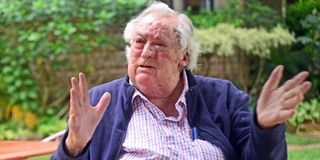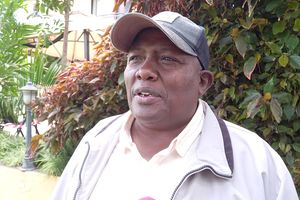Premium
Leakey defends plan to set up Sh8.6bn museum in Kajiado

Career conservationist and palaeoanthropologist Richard Leakey during the interview at Tamambo Karen Blixen on October 27, 2020.
What you need to know:
- This is after Turkana governor Josphat Nanok accused Dr Leakey of robbing the Turkana people of their heritage.
- Dr Leakey in an interview said he donated land worth millions of shillings for the project that was earlier earmarked for construction in Turkana.
- Dr Leakey said the museum was a national project that elevates Kenya’s stature as a tourism destination telling the evolution story via technology that rebuilds long gone eras enabling visitors to experience life as it was two millions of years ago.
- The facility will house the museum, partner institutions, a restaurant, conference rooms and a small amphitheatre to host events such as social, business, and family gatherings.
Renowned palaeoanthropologist Richard Leakey has defended his move to construct a Sh8.5 billion Ngaren Museum in Kajiado county saying it is the culmination of his global lifetime evolution work.
This is after Turkana governor Josphat Nanok accused Dr Leakey of robbing the Turkana people of their heritage.
The governor said Ngarem ought to be built within the archaeological site where humankind’s oldest human fossils, Turkana Boy was discovered and not in Kajiado.
Dr Leakey in an interview said he donated land worth millions of shillings for the project that was earlier earmarked for construction in Turkana.
“I am giving science of evolution a home where children can learn importance of conservation and understand why we have no food, calamities such as floods and pandemics now befall us. We can reverse such ills by understanding what harmoniously held nature together.
Makes commercial sense
“Choice of Kajiado makes commercial sense and Kenya needs the evolution museum that enriches its tourism product while attracting upto 400,000 visitors annually. It will be the only one in Africa and I have partners willing to actualise this dream for posterity,” he said.
Dr Leakey said none of the fossils would be transferred to Ngarem as they were national treasures held at National Museums of Kenya in secured troves.
He chose to change location of his multi-billion shilling project due to remoteness of Turkana county whose infrastructure was still undeveloped making it impassable, inaccessible by air and highly dangerous due to bandits as well as cattle rustling.
Dr Leakey said the museum was a national project that elevates Kenya’s stature as a tourism destination telling the evolution story via technology that rebuilds long gone eras enabling visitors to experience life as it was two millions of years ago.
Shunned sponsorship
“Wildlife sanctuaries and beaches are everywhere but an evolution museum makes Kenya unique with visitors being attracted to learn about their past. Africa is the cradle of humankind and Ngarem will have upto two million years of human history and the origins of the universe — from evolution to biodiversity, overpopulation, war, diseases, and climate change was well as discovery and exploration.
The researcher said Turkana government has shunned sponsorship of any of its projects where he helped raise funds for construction of an institute that will oversee year-round evolution research the two counties.
Ngaren museum, he said, is to be set up next to the East African Museum of Art that will be tasked with displaying contemporary African art history from the dawn of human civilisation to the present times.
EAMAN is tasked with collection, preservation, research and display of the “wealth, genius, and diversity of Eastern African art”.
The facility will house the museum, partner institutions, a restaurant, conference rooms and a small amphitheatre to host events such as social, business, and family gatherings.
Life changing experience
The planned museum at Loodariak, Kajiado county is to become Africa’s first all-digital planetarium to display real-size African dinosaurs to be named Ngaren Museum and will be jointly developed within the next four years in collaboration with Netherlands’
Naturalis Biodiversity Centre Museum and Research project’s Liaison officer for Kenya and the Netherlands Karin Boomsma in an interview said Kajiado was proposed for its proximity to Nairobi saying Turkana was ‘logistically impossible’ due to its undeveloped infrastructure and remoteness.
“Although major fossil finding and the Turkana Base Institute are oriented around Lake Turkana, Ngaren – the museum cannot be built there. After mapping the area and looking into infrastructure and economic value for Kenya’s tourism and travel industry, Turkana as a location is logistically impractical.
“Over time Ngaren has been focused on creating the right content for a life changing experience with science and the topics of natural history, evolution and human origin,” she said.
Dr Leakey said opening up of roads with Kajiado and Narok counties meant higher traffic from JKIA airport to Maasai Mara national reserve via ‘Ngarem’ which will host hospitality and MICE (Meetings, Incentives, Conferences and Events) facilities.





